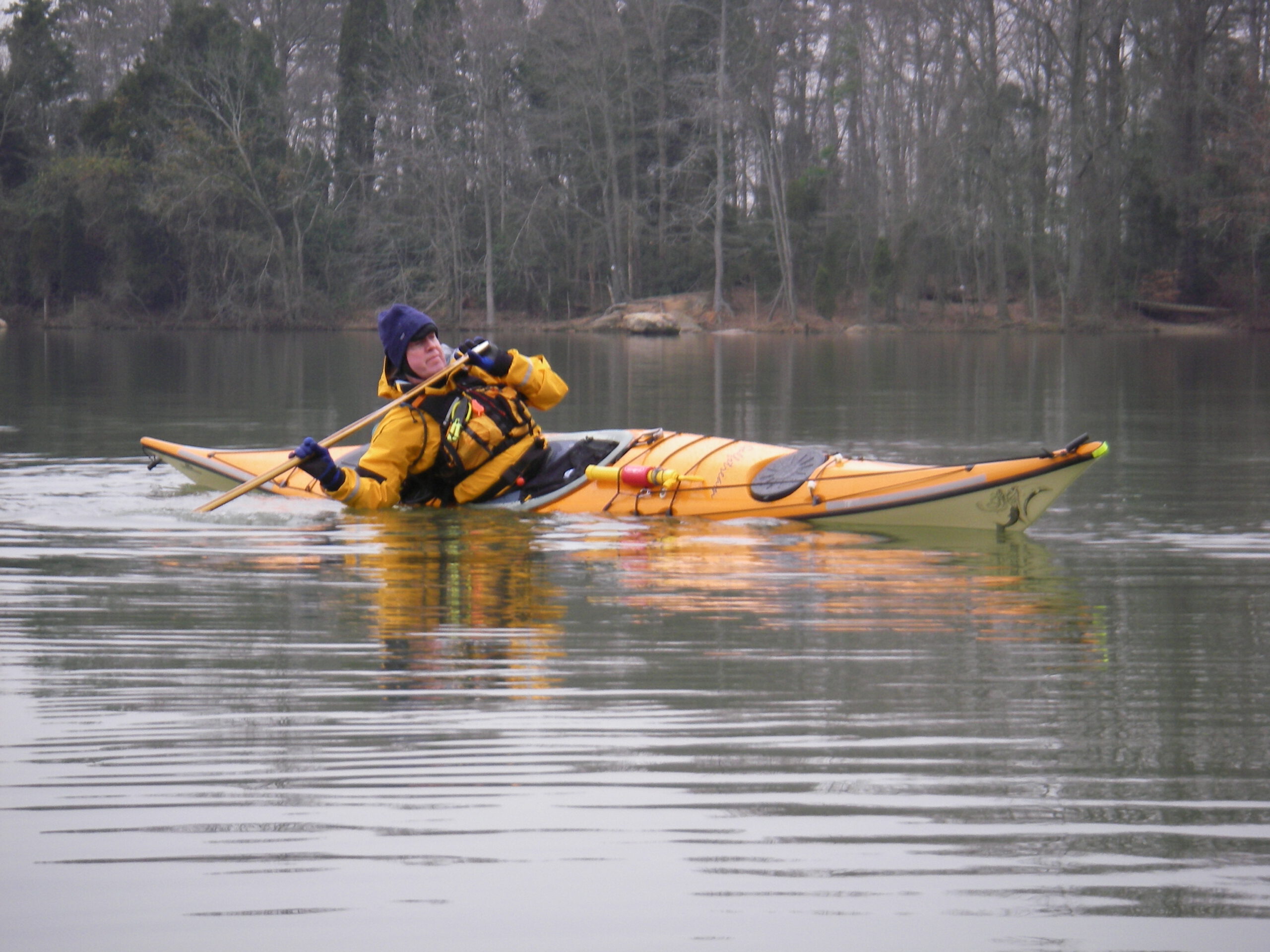
By Bill Mauney
Most folks think that loading a sea kayak is all about getting everything in, but a mariner understands that “there is a place for everything and everything in its place.” There are two things to consider. First is how the load will affect the performance of the sea kayak. Second is where do I pack what and why? Let’s look at the first consideration, how the load affects the kayak’s handling characteristics.
The rule of thumb is to pack the heaviest items as low as possible, centered along the keel line, and closest to the cockpit and the lighter items towards the ends of the kayak and/or higher. The goal is to have the kayak trim, equally balanced fore and aft. Look at a side view of your empty kayak floating in the water. The loaded kayak will look the same in terms of balance front to rear only it will be sitting lower in the water due to the added weight. Too much weight forward will make the kayak “down by the bow” or the bow being more immersed than the stern. The kayak will tend to weather cock or turn into the wind. This could be an advantage if you are paddling upwind, but this will make the kayak more difficult to control. Too much weight aft may cause the kayak to leecock or turn downwind. This may have its advantage if you are paddling downwind, but again this will make control a problem. A trim kayak is best for all round performance. Remember you may have to turn around and go the other way or the weather can change rapidly.
Not only do we want our kayak to be trim fore and aft but also trim side to side. If heavy gear is packed on one side of the keel line the boat will list or lean to that side. This again will cause control issues, as the kayak will want to carve turns in the opposite direction to the list. So not only do you want to pack the heavy items low along the keel line and closest to the cockpit, but also you want to wedge these items into place so they don’t shift to one side in wave action or when you lean your kayak to turn or brace into a wave.
Once packed have your paddling buddy check for trim and list while you sit in the kayak. Remember you are part of the load. Do the hula, rocking the kayak from side to side using your hips. Is the gear shifting around?
Avoid stowing gear on the deck. It affects stability by raising the center of gravity. Also, it can easily wash overboard if hit by a wave. Deck bungees will not prevent this, so if something must be on deck, make sure it is secured by some other means or use a tether. Gear on the deck also creates a sail that can make the kayak more wind sensitive. Waterproof deck bags can be a good solution for small items and mesh deck bags for items you don’t mind getting wet. More on what goes on deck later.
Items stowed in the cockpit should be behind the seat or between the seat hangers and the hull. Some folks make or purchase special storage units mounted under the foredeck. Never stow gear between your legs. If a capsize occurs, this practice may cause entrapment. Items stowed in the cockpit need to be secure so they will not float away in the event of a capsize and wet exit by the paddler.
As you can see, how you distribute the weight in your kayak will have a huge effect on handling characteristics. A little fore thought will go a long way in making your adventures more pleasurable and safer. Remember, “A place for everything and everything in its place.” In the next article I will discuss where do I pack what and why.
Read More in our Coastal Paddling Series
